
Pal: Andorra's Serene Mountain Village
Discover Pal in Andorra: A serene mountain village offering rich history, outdoor adventures, and breathtaking landscapes in the heart of the Pyrenees.
Nestled in the picturesque Pyrenees mountains, Pal is a charming village in Andorra that offers a tranquil escape from the hustle and bustle of modern life. This quaint destination is renowned for its well-preserved Romanesque architecture, with the Church of Sant Climent de Pal standing as a testament to its rich history. Visitors will find themselves enveloped in the serene beauty of lush forests and rolling hills, perfect for those who love nature and outdoor activities. In winter, Pal transforms into a snowy paradise, attracting skiers and snowboarders from around the world. The Pal-Arinsal ski resort is a top choice for its well-groomed slopes and modern facilities. During the warmer months, the village is a haven for hikers and mountain bikers, with trails that offer breathtaking views of the surrounding landscapes. The local cuisine, featuring hearty mountain dishes, is another highlight that promises to delight your taste buds. Despite its small size, Pal is rich in culture and tradition. The village hosts several festivals throughout the year, celebrating everything from local crafts to traditional music and dance. A visit to Pal is not just a journey through stunning natural scenery, but also a step back in time, offering a unique glimpse into Andorra's heritage.
Local tips in Pal
- Visit during different seasons to experience both the snowy slopes in winter and the lush hiking trails in summer.
- Don't miss the Church of Sant Climent de Pal for a dose of local history and stunning Romanesque architecture.
- Try the local cuisine, especially the hearty mountain dishes that are perfect after a day of outdoor activities.
- If you're visiting in winter, book your accommodation and ski passes in advance as it can get busy.
- Participate in local festivals to truly immerse yourself in the culture and traditions of Pal.
Pal: Andorra's Serene Mountain Village
Nestled in the picturesque Pyrenees mountains, Pal is a charming village in Andorra that offers a tranquil escape from the hustle and bustle of modern life. This quaint destination is renowned for its well-preserved Romanesque architecture, with the Church of Sant Climent de Pal standing as a testament to its rich history. Visitors will find themselves enveloped in the serene beauty of lush forests and rolling hills, perfect for those who love nature and outdoor activities. In winter, Pal transforms into a snowy paradise, attracting skiers and snowboarders from around the world. The Pal-Arinsal ski resort is a top choice for its well-groomed slopes and modern facilities. During the warmer months, the village is a haven for hikers and mountain bikers, with trails that offer breathtaking views of the surrounding landscapes. The local cuisine, featuring hearty mountain dishes, is another highlight that promises to delight your taste buds. Despite its small size, Pal is rich in culture and tradition. The village hosts several festivals throughout the year, celebrating everything from local crafts to traditional music and dance. A visit to Pal is not just a journey through stunning natural scenery, but also a step back in time, offering a unique glimpse into Andorra's heritage.
When is the best time to go to Pal?
Iconic landmarks you can’t miss
Caldea Spa
Discover relaxation at Caldea Spa, Andorra's premier thermal baths featuring stunning views and rejuvenating wellness treatments.

Mirador Roc Del Quer | Canillo
Experience the stunning views of Andorra from Mirador Roc Del Quer, a breathtaking observation deck perfect for nature lovers and photographers alike.

La Noblesse du temps - de Salvador Dalí
Explore La Noblesse du temps by Salvador Dalí, a stunning sculpture in Andorra la Vella that embodies surrealism and artistic brilliance in a captivating plaza.

Parc Central
Explore the serene beauty of Parc Central in Andorra la Vella, a lush park perfect for relaxation, picnics, and family fun amidst stunning natural scenery.

Pal Arinsal - Sector Pal
Experience the thrill of skiing in Pal Arinsal, Andorra's premier ski resort, offering stunning slopes and vibrant après-ski activities.

Pont Tibetà | Canillo
Experience the breathtaking views and thrilling adventures at the iconic Pont Tibetà in Canillo, a must-visit destination in Andorra.

Sant Joan de Caselles Church
Discover the tranquil beauty and rich history of Sant Joan de Caselles Church, an architectural gem nestled in the Andorran mountains.
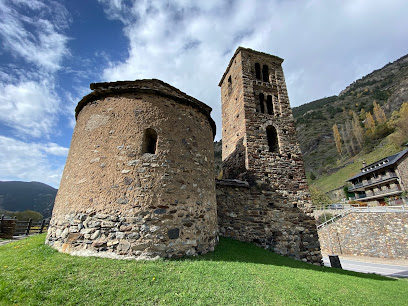
Pal Arinsal - Sector Arinsal
Discover the breathtaking beauty and thrilling winter sports at Pal Arinsal - a ski resort that promises adventure and relaxation in the Pyrenees.

Casa de la Vall
Explore the rich history of Andorra at Casa de la Vall, a former parliament building turned museum showcasing its unique cultural heritage.

Oficines Pal Arinsal
Explore the heart of Andorra's skiing destination at Oficines Pal Arinsal, where adventure meets stunning mountain views.

Restaurant MOLÍ DELS FANALS
Experience the authentic flavors of Andorra at Restaurant MOLÍ DELS FANALS, a dining destination renowned for its exquisite cuisine and stunning mountain views.

National Automobile Museum
Explore the National Automobile Museum in Encamp, a fascinating journey through automotive history in the heart of Andorra, perfect for enthusiasts and families alike.

Hotel NH Collection Andorra Palomé
Discover unparalleled comfort and elegance at NH Collection Andorra Palomé, your gateway to Andorra's stunning landscapes and rich culture.

Pont de la Margineda
Experience the rich history and stunning views at the iconic Pont de la Margineda in Andorra la Vella.

Museum of Miniature
Explore the intricate world of miniatures at the Museum of Miniature in Ordino, Andorra—where artistry and history come to life in stunning detail.

Unmissable attractions to see
Pyrénées Andorra
Explore Pyrénées Andorra, your ultimate shopping destination in Andorra la Vella, offering a blend of local culture, dining, and unique finds in one location.

Naturlandia
Explore Naturlandia, Andorra's top amusement park, where adventure meets nature in a delightful outdoor setting for all ages.

Château de Montségur
Discover the breathtaking Château de Montségur, a historical gem nestled in the French Pyrenees, offering stunning views and a glimpse into Cathar history.

Parc Natural de la Vall de Sorteny
Experience the breathtaking beauty and rich biodiversity of Parc Natural de la Vall de Sorteny in the heart of Andorra's stunning landscapes.
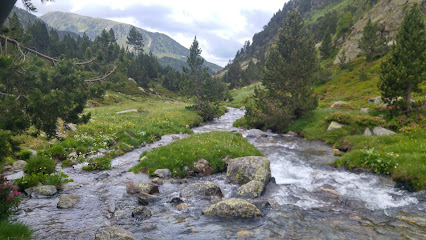
Fnac Andorra
Explore Fnac Andorra, the ultimate electronics retail destination in Andorra la Vella for tech lovers and shoppers seeking quality products.

Sant Miquel Engolasters
Discover the historical and architectural beauty of Sant Miquel Engolasters, a serene church nestled in the stunning landscapes of Andorra.

Parc Natural Comunal de les Valls del Comapedrosa
Explore the breathtaking landscapes and rich biodiversity of Parc Natural Comunal de les Valls del Comapedrosa, Andorra's premier nature preserve.
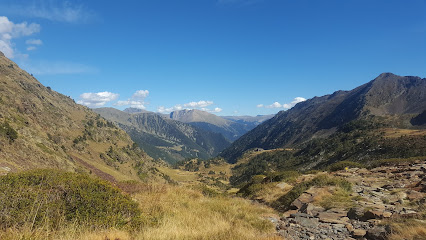
Ruta del Ferro
Explore the fascinating mining history of Andorra at Ruta del Ferro, where culture meets breathtaking natural beauty in the heart of Ordino.

St. Esteve of Andorra Church
Experience the spiritual essence of Andorra at St. Esteve Church, a historic gem featuring stunning Romanesque architecture and serene ambiance.

Pont de París
Explore the stunning Pont de París in Andorra la Vella, a beautiful bridge that offers breathtaking views and a touch of local history.

Tamarro Dino | Ordino
Experience the magical world of dinosaurs in the heart of Ordino, where adventure and nature await every visitor.

Macarulla: Bosc dels Menairons
Explore the mystical trails of Macarulla: Bosc dels Menairons, a breathtaking hiking area in Andorra, rich in folklore and stunning landscapes.

Pla de Boavi
Explore the serene landscapes of Pla de Boavi, a tranquil park in Lleida, Spain, perfect for nature lovers and outdoor activities.
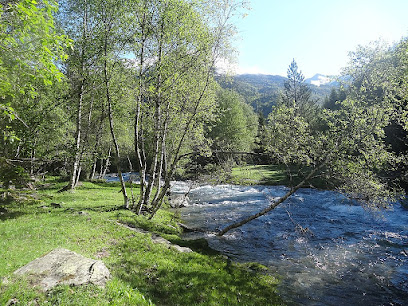
Església de Sant Corneli i Sant Cebrià | Ordino
Explore the enchanting Església de Sant Corneli i Sant Cebrià in Ordino, a historic Catholic church surrounded by breathtaking Pyrenean scenery.

Refugi de Montmalús
Experience the breathtaking beauty of Refugi de Montmalús, a premier hiking destination in the heart of the Andorran Pyrenees.

Essential places to dine
SURF ARINSAL- RESTAURANT & DISCOTECA
Experience authentic Argentinian cuisine and vibrant nightlife at Surf Arinsal in Andorra's breathtaking mountains.

Borda Xicoies (Antiga Raubert)
Discover authentic Andorran cuisine at Borda Xicoies in La Massana - where tradition meets flavor in a cozy mountain setting.

La Borda de l'Avi
Experience authentic Andorran cuisine at La Borda de l'Avi in La Massana – where tradition meets taste.

Restaurant MOLÍ DELS FANALS
Experience exquisite Andorran cuisine at Restaurant MOLÍ DELS FANALS, where local flavors meet stunning mountain views.
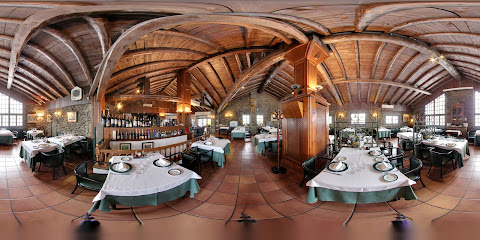
Restaurant CAN MANEL
Experience authentic Andorran cuisine at Restaurant CAN MANEL in the heart of Andorra la Vella - where tradition meets flavor.
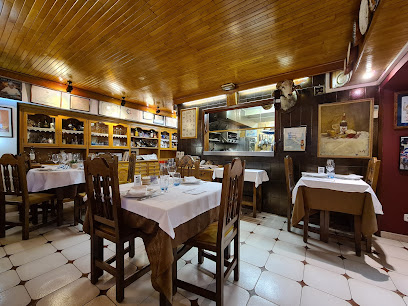
Factory
Experience delightful dining at The Factory in Arinsal - where local flavors meet international cuisine amidst breathtaking mountain views.

Restaurant Cafè l´Isard
Experience the best of Andorran cuisine at Restaurant Cafè l'Isard—where tradition meets modern flair in an inviting atmosphere.

Kökosnøt
Discover Kökosnøt: An exquisite dining experience blending local flavors and international cuisine in the heart of Andorra la Vella.

Mon Bohemi
Discover the vibrant atmosphere at Mon Bohemi in La Massana - where delicious food meets captivating performances.
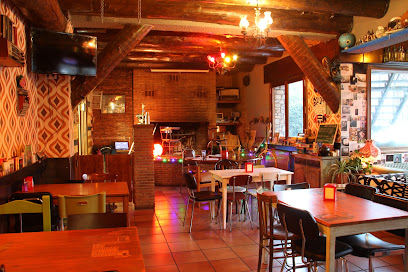
Restaurant el Crostó
Discover exquisite dining at Restaurant el Crostó in Andorra la Vella—where local flavors meet culinary artistry.

We Love Italy Andorra
Discover authentic Italian flavors at We Love Italy in Andorra—where every meal feels like a trip to Italy.

Hunters Sports Bar & Grill
Experience the best of English cuisine at Hunters Sports Bar & Grill in Arinsal - perfect for sports lovers and food enthusiasts alike.

Restaurant Borda Eulari
Experience authentic Andorran cuisine at Restaurant Borda Eulari in La Massana - where tradition meets modernity in every dish.

Borda d'Erts
Experience authentic Andorran cuisine at Borda d'Erts, nestled in scenic Erts - where tradition meets taste.

Borda Xixerella 018
Discover authentic Andorran cuisine at Borda Xixerella 018 in La Massana—where tradition meets taste amidst stunning mountain views.

Markets, malls and hidden boutiques
Centre Comercial Illa Carlemany
Experience the heart of Andorra's shopping scene at Illa Carlemany, where style meets convenience in a stunning setting.

Pyrénées Andorra
Discover the best of shopping and dining at Pyrénées Andorra, where local culture meets a diverse retail experience in Andorra la Vella.

PYRÉNÉES ANDORRA
Explore Pyrénées Andorra for a delightful shopping experience featuring home goods and linens in the stunning Pyrenees backdrop.

PYRÉNÉES ANDORRA - Outlet
Explore fantastic deals at PYRÉNÉES ANDORRA - Outlet, your go-to destination for quality home goods and stylish linens in Andorra la Vella.

Lacoste Andorra
Discover Lacoste Andorra: Where Fashion Meets Lifestyle in the Heart of Andorra la Vella with Iconic Apparel and Accessories.
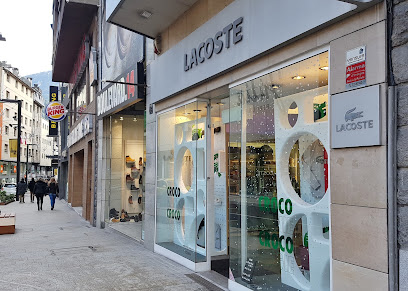
Coco Bis
Discover unique fashion at Coco Bis, the premier clothing store in Andorra la Vella, blending local charm with contemporary style.

TENDENCIES
Explore TENDENCIES, a charming novelty store in Les Escaldes, where unique gifts and quirky treasures await every traveler.

Shop-in-Shop Rituals
Explore luxury and tranquility at Shop-in-Shop Rituals, Andorra la Vella's premier cosmetics destination for beauty and wellness.

The Shopping Mile
Explore The Shopping Mile in Andorra la Vella for a unique blend of international brands, local boutiques, and delightful dining options in a vibrant atmosphere.

D-Kora
Explore D-Kora in Andorra la Vella for unique gifts and stylish furniture that celebrate local craftsmanship and culture.

BESPOKE CLOSET
Explore fashion and elegance at Bespoke Closet, a premier boutique in Andorra la Vella offering unique styles and personalized shopping experiences.

Esports Pal
Esports Pal: Your ultimate destination for gaming gear and community in Pal.

Establiments Lotus
Explore Establiments Lotus in Andorra la Vella for a unique shopping experience filled with local crafts and contemporary goods.

Bigfoot 2 Pal
Discover Bigfoot 2 Pal, the go-to sporting goods store in Pal, offering quality gear for every outdoor adventure in Andorra.

Casa Bellesa
Explore Casa Bellesa in Andorra la Vella for an exquisite selection of stylish shoes, blending fashion with exceptional customer service.

Essential bars & hidden hideouts
Factory
Savor delicious pizzas and grilled specialties at Factory, a vibrant restaurant in the scenic village of Arinsal, Andorra.

Hunters Sports Bar & Grill
Discover a vibrant English restaurant in the heart of Andorra, offering delicious food, refreshing drinks, and a lively sports atmosphere.

Atelier by Aitor Estela
Unwind at Atelier by Aitor Estela, where creative cocktails and a cozy atmosphere meet in Andorra la Vella's vibrant nightlife scene.

THE DERBY IRISH PUB
Experience authentic Irish hospitality at The Derby Irish Pub in La Massana, where hearty dishes and lively entertainment await.

13,5° Wine Bar Andorra
Experience the finest wines in a cozy ambiance at 13,5° Wine Bar, Andorra la Vella's premier spot for wine lovers and casual drinkers alike.
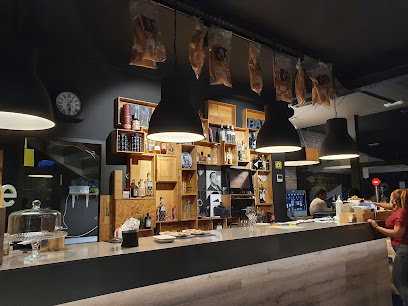
EL RANA Bar Cocktail
Discover the lively atmosphere and creative cocktails at EL RANA Bar Cocktail in Andorra la Vella, a must-visit for nightlife enthusiasts.
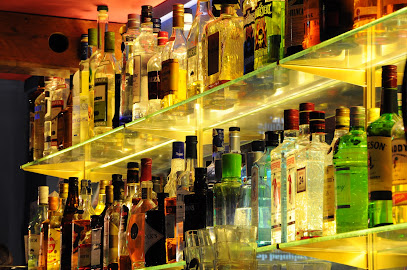
CISCO'S APRE BAR | Arinsal
Experience the perfect blend of relaxation and excitement at Cisco's Apre Bar in Arinsal, where delicious food meets a vibrant atmosphere.

Restaurant Lydia
Discover the exquisite flavors of Pal at Restaurant Lydia, where traditional meets modern in a cozy, welcoming atmosphere.

La Llum d'Oli
Experience authentic Spanish tapas at La Llum d'Oli, a culinary haven in Arinsal perfect for indulging in delicious flavors and vibrant atmosphere.

Bar 4 i Tres Cockteleria
Discover the vibrant nightlife of Andorra la Vella at Bar 4 i Tres, a cocktail bar famous for its unique drinks and lively atmosphere.
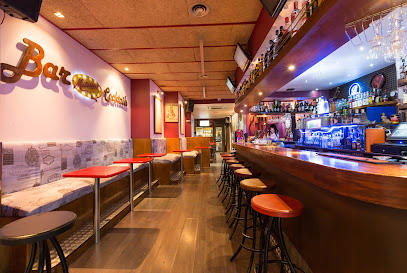
Bacco wine bar andorra
Experience the charm of Bacco Wine Bar in Andorra la Vella, where exquisite wines and a cozy atmosphere await every visitor.
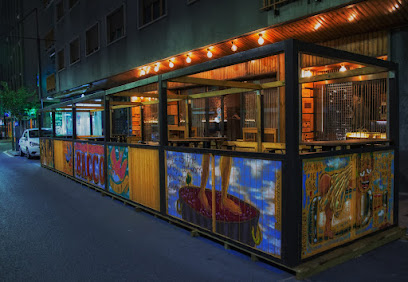
Insitu cocktail Bar
Explore Andorra la Vella's Insitu Cocktail Bar, where vibrant nightlife meets live music for an unforgettable evening.

BAR CIUTAT INVICTA
Discover the charm of Bar Ciutat Invicta in La Massana, where delicious drinks and a vibrant atmosphere await every visitor.

Pub Déjà vu In Situ
Discover the vibrant nightlife at Pub Déjà vu In Situ in Andorra la Vella, where great drinks and live music create unforgettable experiences.

La taverna comapedrosa
Experience the vibrant atmosphere and local flavors at La Taverna Comapedrosa, a charming bar in the heart of Arinsal, Andorra.

Local Phrases about Pal
-
- HelloHola
[oh-lah] - GoodbyeAdeu
[ah-deh-oo] - YesSí
[see] - NoNo
[noh] - Please/You're welcomeSi us plau
[see oos plow] - Thank youGràcies
[grah-syes] - Excuse me/SorryPerdona
[pair-doh-nah] - How are you?Com estàs?
[kohm ehs-tahs] - Fine. And you?Bé. I tu?
[beh ee too] - Do you speak English?Parles anglès?
[pahr-lays ahn-glehs] - I don't understandNo entenc
[noh ehn-tenk]
- HelloHola
-
- I'd like to see the menu, pleaseVoldria veure la carta, si us plau
[vohl-dree-ah veh-oo-reh lah kahr-tah see oos plow] - I don't eat meatNo menjo carn
[noh mehn-joh kahrn] - Cheers!Salut!
[sah-loot] - I would like to pay, pleaseVoldria pagar, si us plau
[vohl-dree-ah pah-gahr see oos plow]
- I'd like to see the menu, pleaseVoldria veure la carta, si us plau
-
- Help!Ajuda!
[ah-joo-dah] - Go away!Ves-te'n!
[vehs-tehn] - Call the Police!Truca la policia!
[troo-kah lah poh-lee-see-ah] - Call a doctor!Truca un metge!
[troo-kah oon meht-geh] - I'm lostEstic perdut
[ehs-teek pair-dooh] - I'm illEstic malalt
[ehs-teek mah-lahlt]
- Help!Ajuda!
-
- I'd like to buy...Voldria comprar...
[vohl-dree-ah kohm-prahr] - I'm just lookingNomés estic mirant
[noh-mehs ehs-teek mee-rahn] - How much is it?Quant val?
[kwan vahl] - That's too expensiveAixò és massa car
[eye-shoh ehs mah-sah kahr] - Can you lower the price?Pots baixar el preu?
[pohts bah-shahr ehl preh-oo]
- I'd like to buy...Voldria comprar...
-
- What time is it?Quina hora és?
[kee-nah oh-rah ehs] - It's one o'clockÉs la una en punt
[ehs lah oo-nah ehn poont] - Half past (10)Dos quarts de onze
[dohs kwahrts deh ohn-zeh] - MorningMatí
[mah-tee] - AfternoonTarda
[tahr-dah] - EveningVespre
[vehs-preh] - YesterdayAhir
[ah-eer] - TodayAvui
[ah-voo-ee] - TomorrowDemà
[deh-mah] - 1Un
[oon] - 2Dos
[dohs] - 3Tres
[trehs] - 4Quatre
[kwah-truh] - 5Cinc
[seenk] - 6Sis
[sees] - 7Set
[seht] - 8Vuit
[vweet] - 9Nou
[noh] - 10Deu
[deh-oo]
- What time is it?Quina hora és?
-
- Where's a/the...?On és...?
[ohn ehs] - What's the address?Quina és l'adreça?
[kee-nah ehs ladh-dreh-sah] - Can you show me (on the map)?Em pots ensenyar (al mapa)?
[ehm pohts ehn-sehn-yahr ahl mah-pah] - When's the next (bus)?Quan és el proper (autobús)?
[kwan ehs ehl proh-pehr ow-toh-boos] - A ticket (to ....)Un bitllet (a ....)
[oon bee-tlyet ah]
- Where's a/the...?On és...?
History of Pal
-
The village of Pal, nestled in the picturesque La Massana parish of Andorra, boasts a history that dates back to the medieval era. The earliest recorded mention of Pal is found in documents from the 9th century, highlighting its longstanding significance in the region. Archaeological findings suggest that the area was inhabited even earlier, with remnants of Roman influence scattered throughout the vicinity.
-
Pal is renowned for its well-preserved Romanesque architecture, a testament to its medieval heritage. The Church of Sant Climent de Pal, built in the 11th century, is a central landmark. This church is a fine example of Romanesque style with its Lombard bands and frescoes, providing insights into the religious and cultural life of the medieval community. The village's layout and stone houses further reflect the architectural practices of the time.
-
Pal's strategic location in the Pyrenees made it a crucial point of defense and trade in medieval times. The village's elevation and proximity to mountain passes allowed it to serve as a lookout and control point for goods and travelers moving through the region. This strategic importance contributed to its development and the construction of fortifications that can still be traced in the landscape.
-
The traditional livelihoods of Pal's inhabitants revolved around agriculture and livestock. The terraced fields and stone barns that dot the landscape are remnants of these practices. The village was known for cultivating cereals, vegetables, and tending to sheep and cattle. This agricultural heritage is a vital part of Pal's history, influencing its social and economic structures over the centuries.
-
Pal has retained a rich tapestry of cultural traditions that have been passed down through generations. Local festivals, such as the Festa Major, celebrate the village's patron saint, Sant Climent, with music, dance, and communal feasts. These events offer a glimpse into the customs and social bonds that have shaped Pal's community life over the years.
-
In recent decades, Pal has embraced modernity while preserving its historical charm. The development of the Pal-Arinsal ski resort has transformed the village into a popular destination for winter sports enthusiasts. Despite these changes, efforts have been made to maintain the architectural integrity and cultural heritage of Pal, ensuring that its historical essence remains intact for future generations to appreciate.
Pal Essentials
-
Pal, a picturesque village in Andorra, is best accessed by road. The nearest major airport is Barcelona-El Prat Airport (BCN) in Spain, approximately 200 kilometers away. From Barcelona, you can rent a car or take a bus to Andorra la Vella, Andorra's capital. From Andorra la Vella, local buses or taxis can take you to Pal. Alternatively, Toulouse-Blagnac Airport (TLS) in France is another option, located around 160 kilometers from Andorra. The journey from either airport to Pal typically takes around 3 to 4 hours by road.
-
Pal is a small village, and many attractions are within walking distance. For exploring the surrounding areas, renting a car is a convenient option. Local buses operate within Andorra and connect Pal to other towns and villages. Taxis are also available but can be more expensive. Cycling is popular in the area due to the scenic mountain routes.
-
The official currency in Andorra is the Euro (EUR). Credit and debit cards are widely accepted in hotels, restaurants, and shops. However, it is advisable to carry some cash for smaller establishments and rural areas. ATMs are available in Andorra la Vella and other larger towns, but it’s wise to withdraw sufficient cash before heading to Pal.
-
Pal is generally a very safe destination for tourists. The crime rate is low, and violent crime is rare. However, like any travel destination, it is advisable to take standard precautions. Keep an eye on your belongings in crowded areas and avoid walking alone at night in unfamiliar places. There are no specific high-crime areas targeting tourists in Pal.
-
In case of an emergency, dial 112 for immediate assistance. This number connects you to emergency services, including police, fire, and medical services. It is recommended to have travel insurance that covers medical emergencies. Pal is close to Andorra la Vella, where you can find hospitals and medical facilities. Pharmacies are also available for minor health issues.
-
Fashion: Do dress comfortably and appropriately for the mountainous terrain, especially if you plan to hike. Avoid overly revealing clothing. Religion: Do respect local customs when visiting religious sites. Dress modestly and remain quiet inside churches. Public Transport: Do be respectful and give up your seat to elderly passengers. Eating and drinking on public transport is generally frowned upon. Greetings: Do greet people with a polite 'Hola' (Hello) or a handshake. Eating & Drinking: Do try the local cuisine and accept hospitality graciously. It's polite to finish your meal and not waste food.
-
To experience Pal like a local, consider visiting during local festivals such as the Festa Major, where you can enjoy traditional music, dance, and cuisine. Engage with locals, who are often friendly and willing to share stories about their village. Explore the nearby Vallnord ski area, which offers activities year-round, including skiing in winter and mountain biking in summer. Don't miss a visit to the Romanesque Church of Sant Climent de Pal, a beautiful example of Andorra's architectural heritage.
Trending Landmarks in Pal
-
Caldea Spa
-
Mirador Roc Del Quer | Canillo
-
La Noblesse du temps - de Salvador Dalí
-
Parc Central
-
Pal Arinsal - Sector Pal
-
Pont Tibetà | Canillo
-
Sant Joan de Caselles Church
-
Pal Arinsal - Sector Arinsal
-
Casa de la Vall
-
Oficines Pal Arinsal
-
Restaurant MOLÍ DELS FANALS
-
National Automobile Museum
-
Hotel NH Collection Andorra Palomé
-
Pont de la Margineda
-
Museum of Miniature
Nearby Cities to Pal
-
Things To Do in Arinsal
-
Things To Do in Andorra la Vella
-
Things To Do in Escaldes-Engordany
-
Things To Do in Ordino
-
Things To Do in Encamp
-
Things To Do in El Serrat
-
Things To Do in Canillo
-
Things To Do in Soldeu
-
Things To Do in Pas de la Casa
-
Things To Do in Toulouse
-
Things To Do in Lleida
-
Things To Do in Girona
-
Things To Do in Lourdes
-
Things To Do in Barcelona
-
Things To Do in Tarragona








